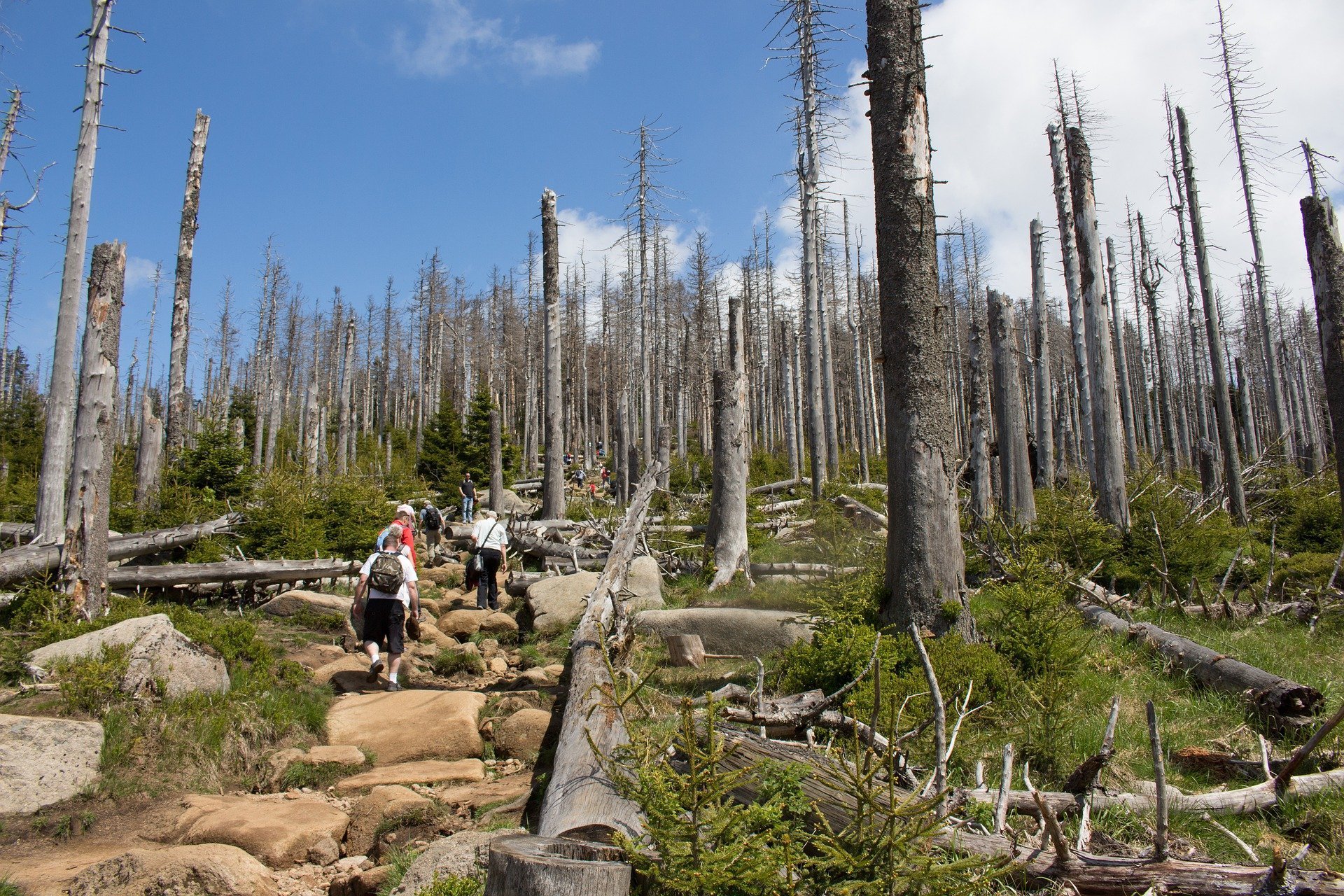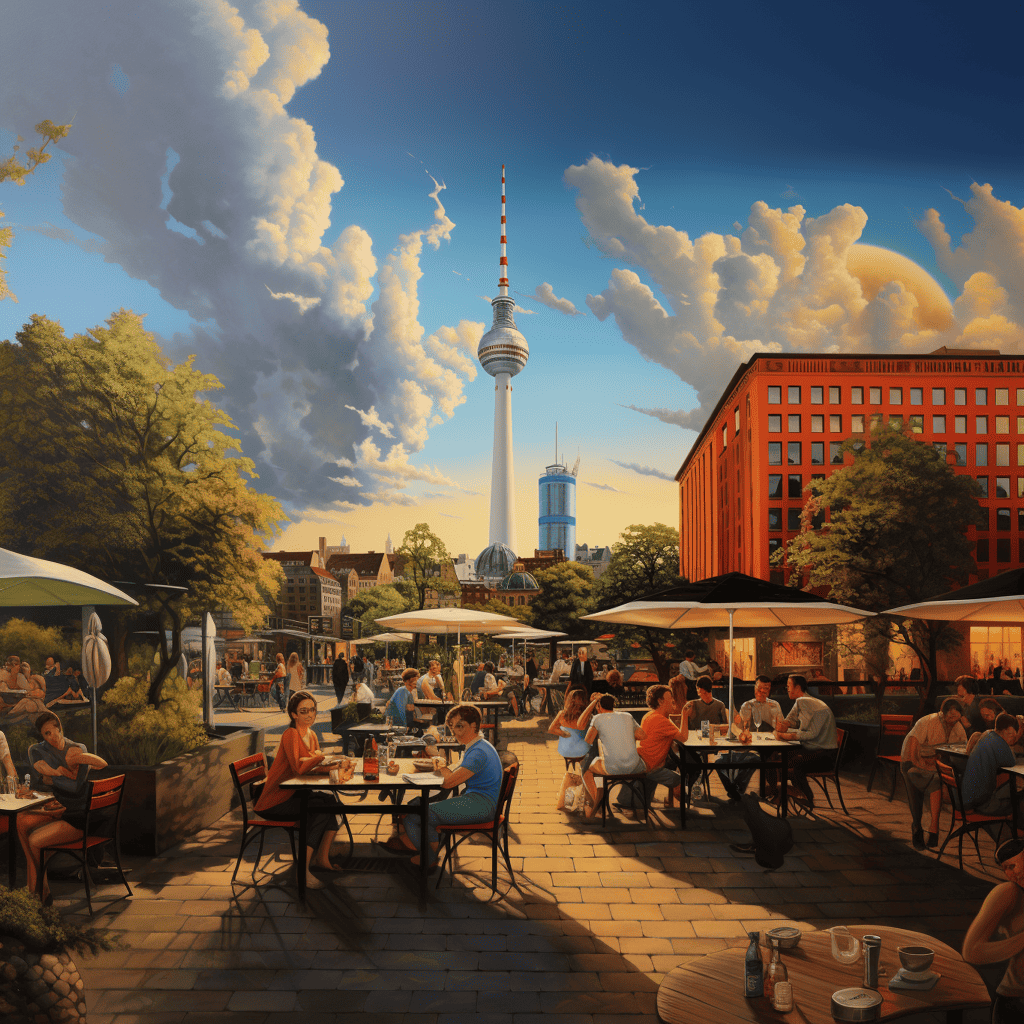
Anyone who has entered the keywords “Bäume” and “sterben” (trees & dying) on the internet over the past few days will undoubtedly have been shocked to the core. Gluttonous beetles, fungi, caterpillars, forest fires, storms and drought have had a disastrous effect on the German forest and tree population.

Last Wednesday, the German Minister for Agriculture, Julia Klöckner, was prompted by this deforestation to announce an emergency fund of €800 million, which is why she said at the national ‘Waldgipfel‘ (Forest Summit Conference) in Berlin: ‘Our forests are not doing well’. To the contrary, there are whole areas of forest that are dying.”
€800 million for the restoration of forests https://t.co/z08AEyCxB4 #Waldgipfel #Klöckner
— tagesschau (@tagesschau) September 25, 2019
According to Klöckner, 180,000 hectares of forest are currently under threat, but it is not only the forests that are endangered, as we learnt at another tree conference in Berlin. The situation in cities is at least as critical.
Tree expert Manfred Forstreuter from the Vrije Universiteit Berlin spoke of “a catastrophe” at the Berliner Baumforum. According to him, Berlin lost on balance some 2,500 trees last year and after two very warm years, many trees are in a bad state.
His biggest concern is for the older trees that are 40+ years old. Of the 431,000 street trees (not counting parks and forests), 43% fall into this category. Due to two extremely dry and therefore warm years, the trees suffer from ‘heat stress’. “And too much stress is deadly,” says Forstreuter. “It was warmer here this year than in Tuscany!”

According to Forstreuter, this stress can be seen in the relatively large amount of fruits, nuts and seeds that trees are bearing this year. Fruit growers will be aware of this phenomenon. It is nature’s response to an approaching disaster. “When disaster approaches, trees tend to give their all for their offspring one last time. Then they die.” Another omen are the dry crowns on the trees. But it is not known exactly how many trees are on the brink of dying. “The problem in Berlin is that each district has its own criteria. Moreover, there is no central register for the tree population.”
Fortsreuter does not have any ready-made solutions, but at any rate he does not agree with one of the other speakers at the Baumforum, Martin Schreiner of the Pflanzenschutzamt Berlin. His message is that it is a better idea to let sick old trees die and to focus energy on young, healthy plants instead.

According to Schreiner, it would be wiser to use the little money available to the city for new plantings instead. In his view, humankind must learn to live with climate change. “The city has changed enormously in the last 100 years. This not only applies to temperature, but also to the amount of traffic and the types of buildings. This calls for a different approach to environmental management.” He is, for instance, in favor of planting more heat-resistant tree species, a direction that Minister Klöckner is also thinking about for the forests.
Forstreuter believes that it is not that simple to use the term ‘old trees’. Of course, really sick trees have to be chopped down, but for the rest of the trees, which have only been weakened by a few dry years, the municipality must make a serious effort. One way would be to carry out mandatory tree impact assessments as part of construction projects, like the building of houses and new roads and sidewalks.
Incidentally, the most dramatic story at the Baumforum didn’t come from Berlin, but from Magdeburg. There is a murderer all the way from Asia who has decimated 10,000 trees in the past five years. This is the Asian long-horned beetle which, according to forester Jens Geffert from Saxony-Anhalt, has no natural enemies. It is an animal that presumably traveled in wooden pallets from China. To fight this beetle (and its larvae), Geffert has teamed up with about 20 people. “It’s a tough, expensive battle and we don’t know if we’re going to win it yet.”








